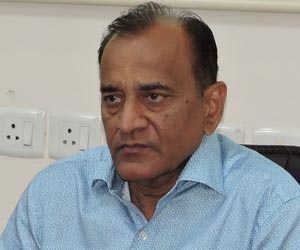There has of late been speculation that the Modi Government could usher in substantial changes in the country’s fiscal governance through three methods: First, by revising the financial year from the present April-March cycle to January-December; second, by scrapping the Railway Budget; and third, by abolishing the classification of expenditure as Plan and non-Plan. At a recent interaction in New Delhi, NITI Aayog (National Institute for Transforming India) member and economist Bibek Debroy said these measures could potentially be introduced over the next three years, individually if not together.
There is also a fourth change that is being talked about and which appears to be more immediately implementable, and it is to advance the Union Budget to January-end; currently the Budget is presented at the end of February every year. There are reports that the Government is keen to switch to the new schedule in the coming Budget Session of Parliament. But for this idea to go through, there will have to be a broad consensus among political parties. The Business Advisory Committees of the two Houses of Parliament, having representation from different parties, need to agree to the new arrangement since it calls for the advancement of the Budget Session and possible rejig of other sessions as well, as a result.
Predictably, parties have reacted differently to the suggestion. While some have welcomed it, others have questioned the purpose of tampering with a system that has, in their opinion, worked fine all these decades. If the Modi regime is determined to see through this move, it will have to convince the opposition benches on the benefits. One such advantage in presenting the Budget by January-end is the time that gets saved, which can be used to implement the Budget’s measures that are adopted by Parliament, earlier than being done presently.
The bare facts are as follows: The Budget is presented in February-end; the financial year begins on April 1; the Demands and Appropriation Bill, which consists of details of the full-year expenditure gets passed in April-May; the Government thus takes Parliament’s approval for a Vote on Account to meet various expenditures in the intervening period that comprises April 1 and the time it takes to get the Bill endorsed. As a result, therefore, most ministries get their money only by June at the earliest, leaving them with barely eight months in the financial year to spend meaningfully. In other words, they get to truly perform only in the third or fourth quarter of the fiscal. This is one of the reasons, if not the main, why many ministries often are unable to spend their full quota of funds and have to surrender the unspent amount. This assumes irony given that many such ministries harbour the grievance that the total outlay the Budget gives them is insufficient to meet their optimal needs.
Then there is the Finance Bill, which is the second component of the Union Budget. This consists of the various taxation measures the Government decides for the coming financial year. As in the case of the Demands and Appropriation Bill, the Finance Bill too gets passed in April-May, and it is only then that taxpayers get the final picture and scramble to make plans accordingly, additionally taking into consideration the fact that the tax measures are effective retrospectively from April 1.
A January Budget would mean that the President’s assent to the Bills can come by March 31, before the new fiscal kicks in.
The presentation of the Union Budget on the last working day of January will, therefore, serve three important purposes. It can eliminate the practice of Vote on Account, boost the creation of productive assets through early access to funds, and help taxpayers to plan in time, both in terms of investment and saving. It must be remembered here that taxpayers are not just individuals but also corporates who can perform better if the final tax regime is known to them earlier than at the last minute.
If one takes the January-end Budget idea alongside the three other suggestions mentioned in the beginning of this article, one can argue that an early Union Budget would be a needless change of schedule. After all, if the fiscal year changes to January 1-December 31, the synchronisation is lost and we are back to square one. While a solution to this challenge will have to be discovered as and when it is needed, for now, at least, a January-end Budget comes with many immediate advantages.
In any case, the Government has already initiated the process to weigh the pros and cons of a change in the financial year. A committee headed by former Chief Economic Advisor Shankar Acharya has been constituted to study every facet of the idea and present its report by this year-end. The Union Ministry of Finance had issued a statement on the subject, saying that the committee ‘will examine the merits and demerits of various dates for the commencement of the financial year, including the existing date (April to March) taking into account the various relevant factors.” It is obvious that, once the panel submits its finding, the Government will take some time to study it and firm up its mind. A final view is unlikely to develop anytime before the start of fiscal 2017-18. The earliest a change can happen is in the fiscal 2018-19.
It is not the first time that the Centre has been seized with the thought of changing the fiscal year. The LK Jha Committee had been appointed way back in 1984 to study the suggestion of a switch. It came in the backdrop of demands that the Indian fiscal year must conform to that of most countries around the world, given that the Indian economy was integrated with that of the rest of the world. After considering a variety of factors, the Jha panel had emphatically recommended a change to the January-December format, not least also because the south-west monsoon which follows the summer season in India, has a tremendous impact on the country’s economy, which most financial planning fail to take into account. But the then Government had rejected the recommendation. Perhaps the Government had felt the change involved too many improbables and was fraught with risks. The Government also had its share of status quoists who felt that the century-and-half old tradition, which the British had established to suit their own fiscal cycle, should not be tweaked.
The issues before the Shankar Acharya panel are the same that the Jha Committee had grappled with. If anything, globalisation has grown manifold, and India’s integration into the world economy since then has seen a phenomenal leap, beginning with the 1991 defining financial reforms which the PV Narasimha Rao regime had brought about. The India of 1984 was still an insulated entity, with the dominant political class not just happy about but perhaps even proud of such insulation.
Now, to the second idea. It is not surprising that Debroy has been frequently speaking about the possibility of a separate Railway Budget being done away with. As a member of NITI Aayog, he headed a panel which was tasked by the Prime Minister’s Office with detailing a plan to integrate the Railway Budget into the Union Budget. There was no ambiguity in its mandate. The committee, in its finding titled, ‘Dispensing with the Rail Budget’, has strongly recommended the assimilation, pointing out that the “Constitution does not mandate the Government to lay a separate Railway Budget”.
Among other things, the panel said that the abolishing of the Railway Budget could usher in better accounting practices in the functioning of India Railways, enhance commercial decision-making, and most importantly, free the railways of the constant — if reduced in recent months — political pressure.
Admittedly, any final decision to merge the Railway Budget with the Union Budget has to consider various aspects, including political. Over the decades, the budget had become a means to dole out populist measures, often at the cost of sensible economics. Hirings were done keeping political constituencies in mind, and financial viability was kept on the back-burner. More trains were routinely announced even as the existing tracks were woefully inadequate to take the pressure. The free play of subsidies and privileges for the select meant that Indian Railways never had enough resources to plough back for modernisation and enhancing safety standards, let alone for expansion. The operating ratio of Indian Railways had hovered at an abysmal 96 per cent; Minister for Railways Suresh Prabhu had in his last Budget targeted a figure of 92 per cent. If this works out, the railways will have eight paise per rupee it earns to invest in the improvement of the railways’ functioning, as against the four paise earlier.
There are many reasons for the poor ratio over the years. The lack of innovation is one. Indian Railways has several ways to raise revenue, including those from the vast tracts of real estate it owns across the country. They have never been put to good use. Then there is the absence of an effective streamlining of operations, which has resulted in both leakages of revenue and failure to optimise earnings. In his last Budget speech, Prabhu rightly said that an improvement in the operating ratio would signify a transformation in the very functioning of Indian Railways.
The prospect of the Railway Budget being a document of the past has considerably brightened with the Railways Ministry under Prabhu being open to the idea. Indeed, the success of many of the ambitious schemes that the Railways Minister is working to implement over a period of time — modernisation of stations, revamping the freight sector, introducing cutting-edge safety standards etc — rests on unshackling Indian Railways from the constraints that a Budget dedicated to it, places on him. The Railways Minister is a practical man who is not unduly worried about his ‘reduced’ political stature in case Indian Railways loses ‘its own’ budget. He knows that, as a national carrier and the single biggest Government employer, the railways will continue to enjoy a primacy few other Government departments can hope to have. Also, if the scrapping of a separate budget — and its addition to the Union Budget, perhaps as an Annexure — can add to the competence of Indian Railways and open doors for enhanced investment, there is no reason why Prabhu should object. As things stand, the ball is in the Government’s court. It has to call a political call in the matter.
And finally, there is the move to scrap the classification of expenditures into Plan and non-Plan. The need to do away with the distinction had been spoken of in hushed tones for years now, but it gained currency after the Planning Commission was dismantled and replaced by NITI Aayog. Then Finance Secretary Ratan Watal had remarked, “In the backdrop of the abolition of Planning Commission… the classification of expenditure as Plan and non-Plan is in the way of losing its relevance. If the accounting of expenditure is classified broadly under revenue and capital, I think this is where the expenditure is focused.”
This view has found wide acceptance among experts, both within the Government and outside. The Plan and non-Plan terminology is considered dated across the world and is seen as a relic of the Soviet-era economic model which ruined not just the Soviet Union but all those other nations that had adopted it. The change could have been initiated as early as five years ago, in 2011, when an experts’ committee headed by then Chairman of the Prime Minister’s Economic Advisory Council, C Rangarajan, recommended an end to Plan and non-Plan classification and the adoption of a single category of ‘expenditure’. But the suggestion was not acted upon, because it would have been interpreted as a repudiation of the Planning Commission — itself a left-over of a discredited system but for decades touted by Congress regimes as a shining example of the Nehruvian ideology of Centrally-controlled economic planning.
One of the drawbacks of the dual classification has been that greater emphasis was laid on Plan expenditures because they were considered to take forward the Government’s Centrally-sponsored large-ticket schemes, whereas non-Plan expenditures — in areas of defence, subsidies, maintenance of assets, judiciary, payment of interests and pensions etc — were seen as something of a drag. Over the years, the distinction between the two has blurred and the straight-jacketing has yielded results contrary to the greater national good.
One of the positive outcomes in case the distinction is brought to an end, will be seen in the linkages between spending and outcome. Many non-Plan expenditures get inadequately accounted for, because no political system has had the courage to demand accountability and transparency on politically-sensitive interventions such as subsidy and interest payment on loans. This is despite the fact that the non-Plan expenditure constitutes the biggest proportion of the Government’s total expenditure — according to some estimates, it is close to 70 per cent. With the Modi Government taking the bull by the horns, and if the classification ends, this anomaly will be addressed and Central expenditures will gain a larger measure of efficiency.
The solutions are before us. But we need to discard the mindset of dragging our feet on the pretext that the road to achieving the solution is paved with obstacles. For instance, the change in fiscal year has been talked of since the last 32 years. This was enough time for policy-makers to have taken an informed plunge. Similarly, the endorsement of Budget proposals by Parliament and their clearance by the President ought to, by all common-sense logic, be done before the new fiscal year begins. And yet, we have for decades continued with a system that has been a handicap to development. The Plan and non-Plan classification was persisted with in spite of all evidence that spoke out loudly against the practice. Politics, and the lack of political will at a time when such will was most needed, always came in the way — like they did in the case of the Goods and Services Tax Bill. Eventually, and fortunately, the enabling amendment to the Constitution to pass the GST Bills was passed by Parliament recently. It’s only in a spirit of political non-partisanship that the offshoots of the three new ideas can blossom.
Meanwhile, the Union Government must keep working on the deliverables that matter more immediately to the citizens who voted the Modi regime to power with huge expectations. That there is much that needs to be improved became evident when the Prime Minister, addressing a meeting of senior party leaders, called upon Chief Ministers of BJP-ruled States to pull up their socks and address the concerns of the people cutting across caste and creed. The Government cannot afford to have frustration setting in. The ‘Sabka saath, sabka vikas’ slogan is a commendable one; it needs to be realised on the ground more effectively.
(The writer is a senior political commentator and public affairs analyst)
Published Date: 30th August 2016, Image Source: http://www.slideshare.net
(Disclaimer: The views and opinions expressed in this article are those of the author and do not necessarily reflect the official policy or position of the Vivekananda International Foundation)











Post new comment